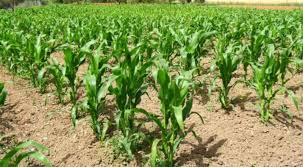Cherry farming
Cherry farming is the cultivation of cherry trees for the purpose of producing cherries. Cherries are delicious fruits that are enjoyed by many people around the world and are commonly used in various culinary applications, such as desserts, jams, and beverages.
Here are some key aspects of cherry farming:
Click on the link 🔗🖇️👇
Varieties of cherries: There are numerous cherry varieties available, including sweet cherries (Prunus avium) and sour cherries (Prunus cerasus). Sweet cherries are typically eaten fresh, while sour cherries are often used for cooking and processing.
Climate and growing conditions: Cherries thrive in temperate climates with distinct seasons. They require a certain number of chilling hours (hours of exposure to temperatures below a specific threshold) during the dormant period to break bud and produce a good crop. The specific chilling hour requirements vary depending on the cherry variety.
Site selection: Cherry trees prefer well-drained soil with good fertility. They also require full sun exposure to develop properly. When selecting a site for a cherry orchard, factors such as soil quality, slope, and water availability should be considered.
Propagation and planting: Cherry trees can be propagated through grafting or budding onto rootstocks. They are typically planted as bare-root or container-grown trees. The planting process involves digging a suitable-sized hole, ensuring proper spacing between trees, and providing adequate support, such as stakes or trellises, depending on the variety and desired training system.
Orchard management: Proper orchard management practices are crucial for cherry farming. This includes irrigation, fertilization, weed control, pest and disease management, and pruning. Cherry trees need regular watering, especially during dry periods, and balanced nutrition to support healthy growth and fruit development.
Harvesting: Cherries are harvested when they reach optimal ripeness, which varies depending on the variety. Sweet cherries are generally hand-picked to avoid damaging the delicate fruit, while sour cherries can be harvested using mechanical methods. It's important to handle the cherries carefully to prevent bruising.
Post-harvest handling: After harvesting, cherries should be cooled rapidly to preserve their quality and extend their shelf life. They can be stored in refrigerated conditions or processed into various products like juices, jams, or dried cherries.
Market considerations: It's essential to consider the market demand for cherries when planning a cherry farming operation. Factors like local consumption patterns, potential buyers, and marketing strategies should be taken into account to ensure a profitable venture.
Cherry farming requires careful planning, attention to detail, and a good understanding of the specific needs of cherry trees. Local agricultural extension services or horticulture experts can provide valuable guidance and resources to help aspiring cherry farmers succeed.
Click on the link 🔗🖇️👇




Comments
Post a Comment